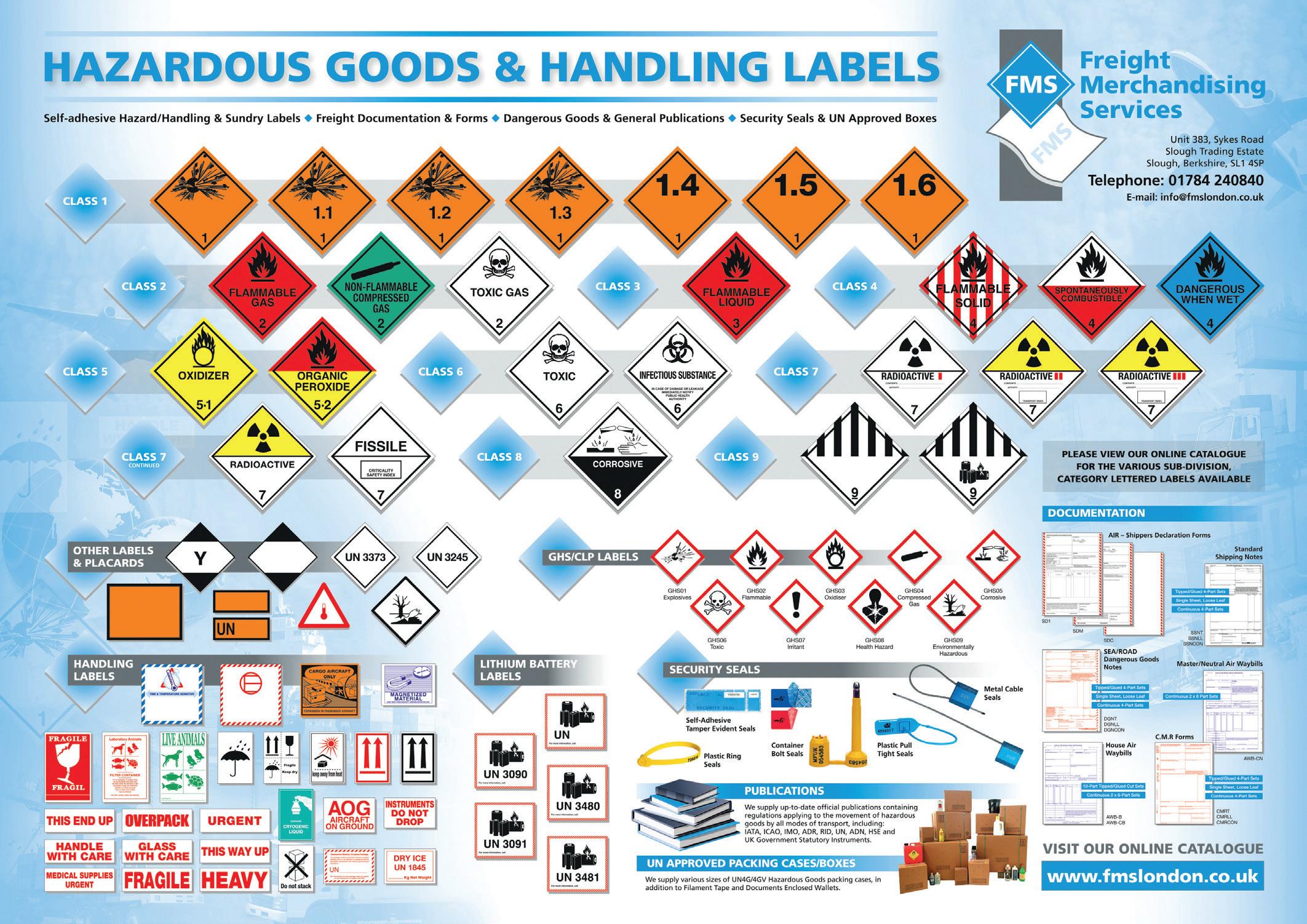
4 minute read
News bulletin – regulations
NEWS BULLETIN
REGULATIONS
CANADA REVIEWS RAIL TANKS
Transport Canada has opened a consultation period on the draft revision to CAN/CGSB43.147, the safety standard that sets out the requirements for the design, manufacture, maintenance, qualification, inspection, marking, selection and use of rail tank cars.
Among the changes in the new edition – which will replace Transport Canada standard TP 14877, published in 2013 – are a schedule for the phasing out of legacy tank cars in toxic inhalation hazard (TIH) service and the addition of an ‘H’ delimeter for the newer specification of TIH tank cars. The update will also remove the TC114 class, enhance the specification of Class 113 tank cars in cryogenic flammable liquid service, and make other changes, including closer alignment with US regulations.
The consultation period closes on 7 August, after which Transport Canada will seek to incorporate the new standard in the Transportation of Dangerous Goods Regulations.
CANADA UPDATES CARTRIDGES
The Canadian General Standards Board (CGSB) has published a new edition of its standard CAN/CGSB-43.123, ‘Aerosol Containers and Gas Cartridges for Transport of Dangerous Goods’. The new edition, which will supersede the 2017 version, aligns with the 21st edition of the UN Model Regulations and the current US Hazardous Materials Regulations; it also adds requirements for the new TC-2P2, TC-2P1 and TC-2Q2 specifications for gas cartridges intended for use with LPG and with foodstuffs and soaps. There are also revised requirements for the transport of containers intended for disposal or recycling.
The new standard came into force immediately on its publication in April but stakeholders may continue to use the 2017 edition during a six-month transitional period that ends on 31 October 2022.
PHMSA CONSULTS ON E-DOCS
The US Pipeline and Hazardous Materials Safety Administration (PHMSA) has opened a consultation on the potential use of electronic communication as an alternative to current paper-based requirements for hazard communication. PHMSA is considering a revision to the Hazardous Materials Regulations (HMR) that would authorise performance-based electronic communication of shipping papers, train consists, dangerous goods manifests, notifications to the pilot in command (NOTOCs) and emergency response information, as well as administrative documentation such as special permits, approvals and registrations.
PHMSA notes that HMR currently requires hazard communication to be maintained as physical, printed materials during transport. However, it believes that there are already widely adopted technologies that could replace the existing system, while also offering opportunities for improved emergency response and oversight. In a Request for Information, published on 11 July, PHMSA seeks input to help it determine the most effective mechanisms and potential impediments to the adoption of electronic hazard communication. PHMSA would like comments by 9 September.
USPS TIGHTENS BATTERY REQUIREMENTS
The US Postal Service (USPS) has revised its regulations for mailing hazardous materials, Publication 52. The changes now require shippers to separate hazardous materials that require marks or labels from other mail – this provision applies to all hazardous materials.
There are other changes related specifically to devices containing or packed with lithium batteries. The mailing of pre-owned, damaged or defective electronic devices containing (or packed with) lithium batteries is restricted to surface transportation only. Specific markings are required on mail containing lithium batteries in or with pre-owned, damaged or defective electronic devices: ‘Restricted Electronic Device’ and ‘Surface Transportation Only’.
IATA WINDS DOWN THE WINDOWS
The International Air Transport Association (IATA) is to discontinue its e-Reader and the associated single-licence Windows downloads as from the end of 2023. This has been a
popular platform for several years, says leading distributor Labeline, but the move to a platform that allows users to access IATA publications via any device will provide much more flexibility.
Labeline says that, for now at least, existing Windows downloads will still be accessible but once its stock of licences has been exhausted, new subscribers will have to create a ‘Bookshelf’ account to access IATA publications. It also says that the existing e-Reader system will be available for the 63rd edition of the Dangerous Goods Regulations, which covers 2022, and the ninth edition of IATA’s Lithium Battery Shipping Regulations.
BCGA CLARIFIES UK POSITION
The British Compressed Gases Association (BCGA) has published a new Guidance Document (GN48) on type approval and conformity assessment of transportable pressure equipment in the UK. The document aims to clarify the post-Brexit legislation in the UK for such equipment.
The document can be freely downloaded from the BCGA website at https://bcga.co.uk/ publications/gn48-type-approval-andconformity-assessment-of-transportablepressure-equipment-in-the-uk-2022/.
US LOOKS AT OFFSHORE SAFETY
The US Coast Guard (USCG) has updated a policy letter on guidelines for transporting hazardous substances on offshore support vessels (OSVs) to reflect significant changes in the International Code for the Construction and Equipment of Ships Carrying Dangerous Chemicals in Bulk (IBC Code) that came into force on 1 January 2021.
The IBC Code is applied to OSVs through the International Maritime Organisation’s (IMO) Resolution A.673(16), which takes into consideration the unique design and service characteristics of the vessels. It also limits the quantity of hazardous and noxious liquid substances that can be carried on OSVs.
The changes updated carriage requirements for a significant number of products and therefore have an impact on ship type, tank type and toxicity classification, as some products previously classified as non-toxic have been reclassified as toxic. Due to the changes, any ship carrying hazardous chemicals or noxious liquid substances will need a new Certificates of Fitness (COF) and Noxious Liquid Substances (NLS) certificate.
The USCG Office of Design and Engineering Standards Hazardous Materials Division (CG-ENG5) released an updated policy letter on 16 May that includes the revised carriage requirements for cargoes of hazardous and noxious liquid substances for OSVs. The policy letter is intended to guide voluntary compliance until the new international standards are fully incorporated into the US Code of Federal Regulations (CFR).











